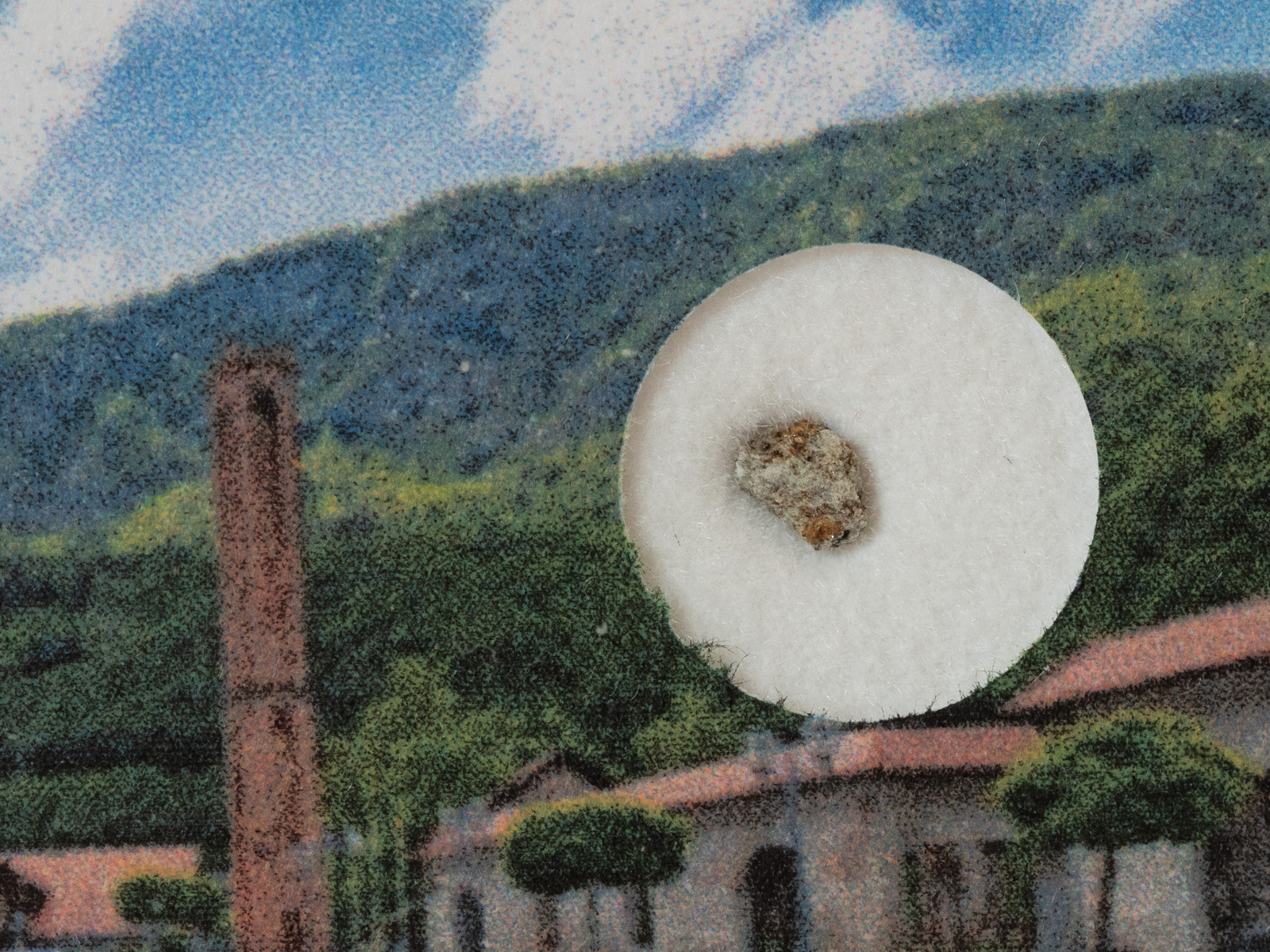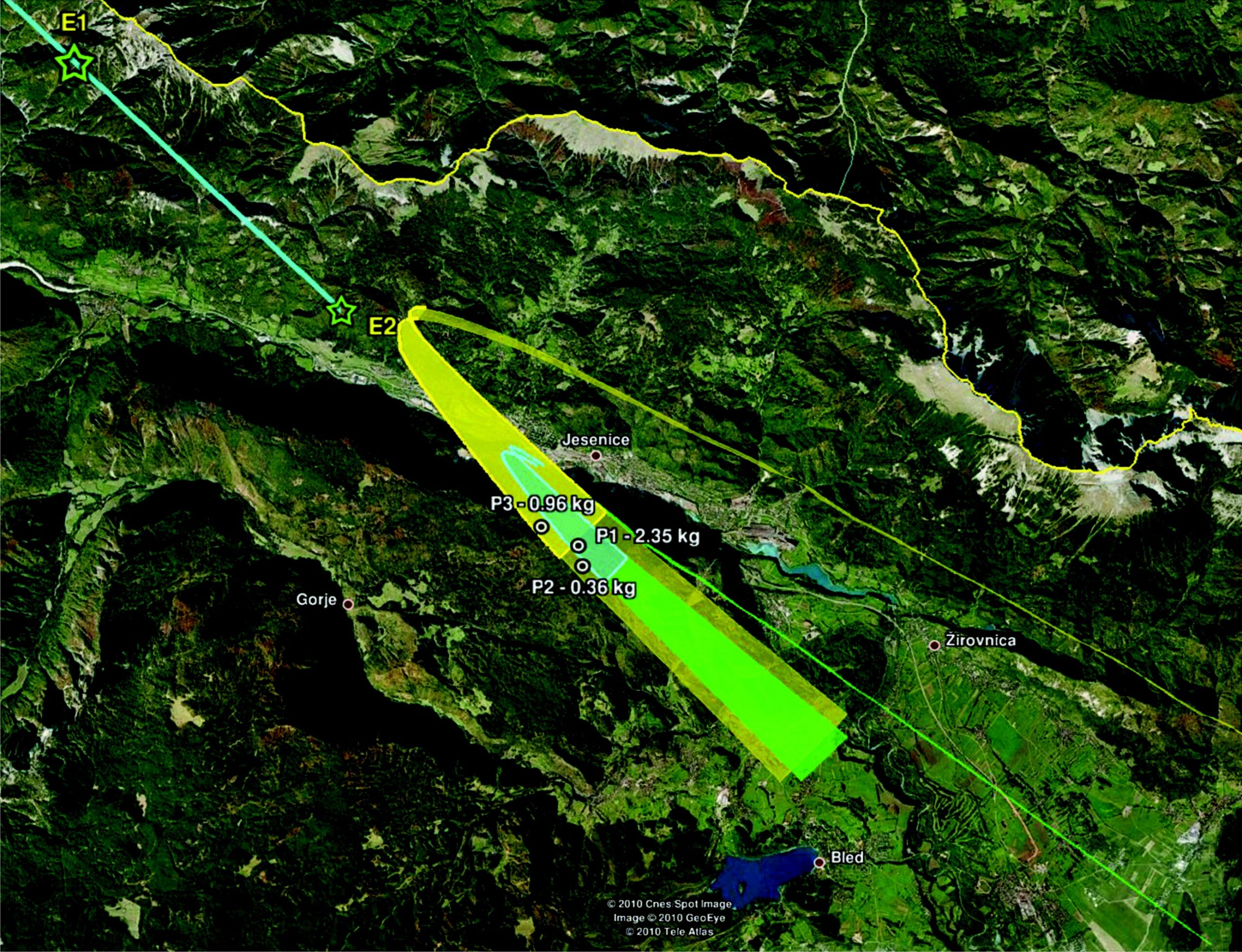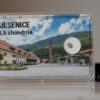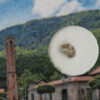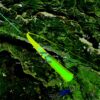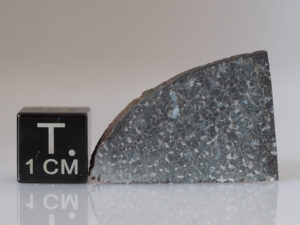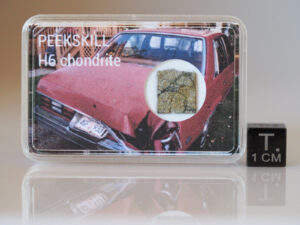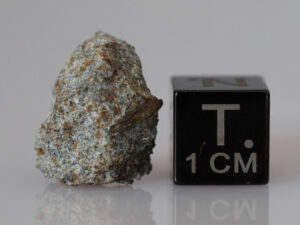Description
0.012g fragment sold in a collection box with label/certificate of authenticity + two printed photos of the place of find.
*** If you buy from the € zone, please use € currency on my website and for payment. This way, you’ll avoid paying Paypal conversion fees ! ***
Jesenice 46°25.282’N, 14°03.130’E
Upper Sava Valley, Slovenia
Fell: 9 Apr 2009, 3:00 CEST (UT+2)
Classification: Ordinary chondrite (L6)
History: On April 9, 2009, a bright fireball appeared over Carinthia and the Karavanke Mountains. The meteoroid entered the atmosphere at a steep angle and disintegrated into a large number of fragments after more than 4 s of flight. In Jesenice and its vicinity, witnesses reported loud explosions following the disappearance of the fireball. Eyewitness reports were documented and evaluated by Thomas Grau (ERFM, Bernau). Two Czech automated fireball stations of the European Fireball Network (EN) recorded the bolide. Based on photographic and photoelectric records taken by the stations, Pavel Spurný and Jiří Borovička (Academy of Science, Czech Republic) determined the atmospheric trajectory and heliocentric orbit of the initial meteoroid. The bolide was also recorded by all-sky and meteor cameras in Slovenia. The supersonic boom was registered by infrasound stations and seismometers in Slovenia, Austria, Germany, and Italy. The first fragment (2.35 kg) of this fall was recovered by Jožef Pretnar and Bojana Krajnc on May 17, 2009. A second complete individual of 361 g was found on July 21, 2009 by Ralph Sporn and Martin Neuhofer (46°25.079’N, 14°03.193’E) and a third one of 956 g by Danijel Repe on August 27, 2009 (46°25.473’N, 14°02.621’E). Total weight: approximately 3.667 kg.
Petrography and mineral compositions (A. Bischoff, IfP; Miha Jeršek, SMNH): The rock is fine-grained and shows brownish taints (weathering) on surfaces of the broken pieces. Shock veins were detected. In thin section Jesenice is highly recrystallized and a few relic chondrules are visible indicating it is a type 6 chondrite. This is also supported by the large grain size of plagioclase and homogeneous olivine and pyroxene. Mean olivine and low-Ca pyroxene are Fa25 and Fs21, respectively.
Classification: Jesenice is an L6, S3 ordinary chondrite.
Specimens: Main mass and type specimens located at SMNH.


